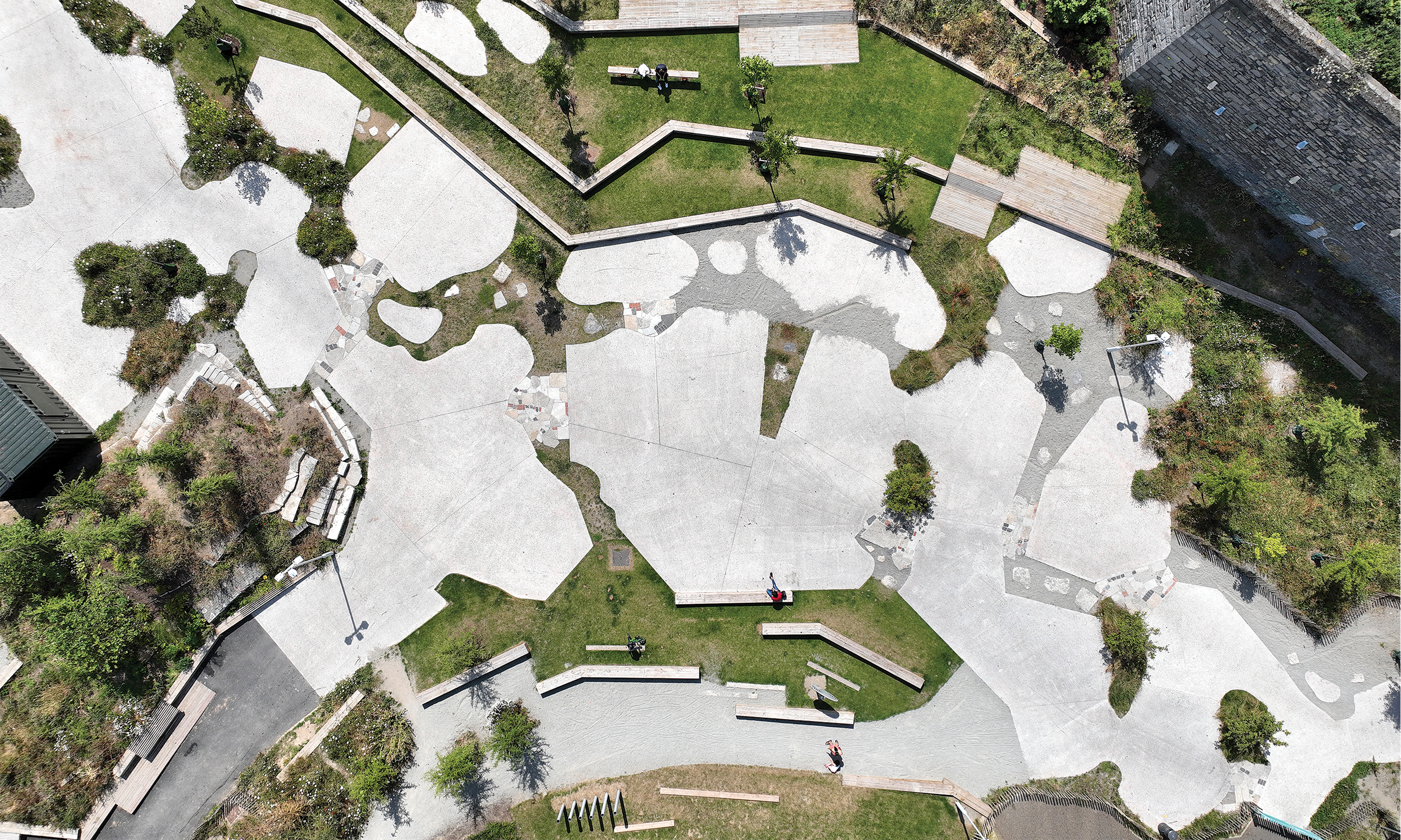
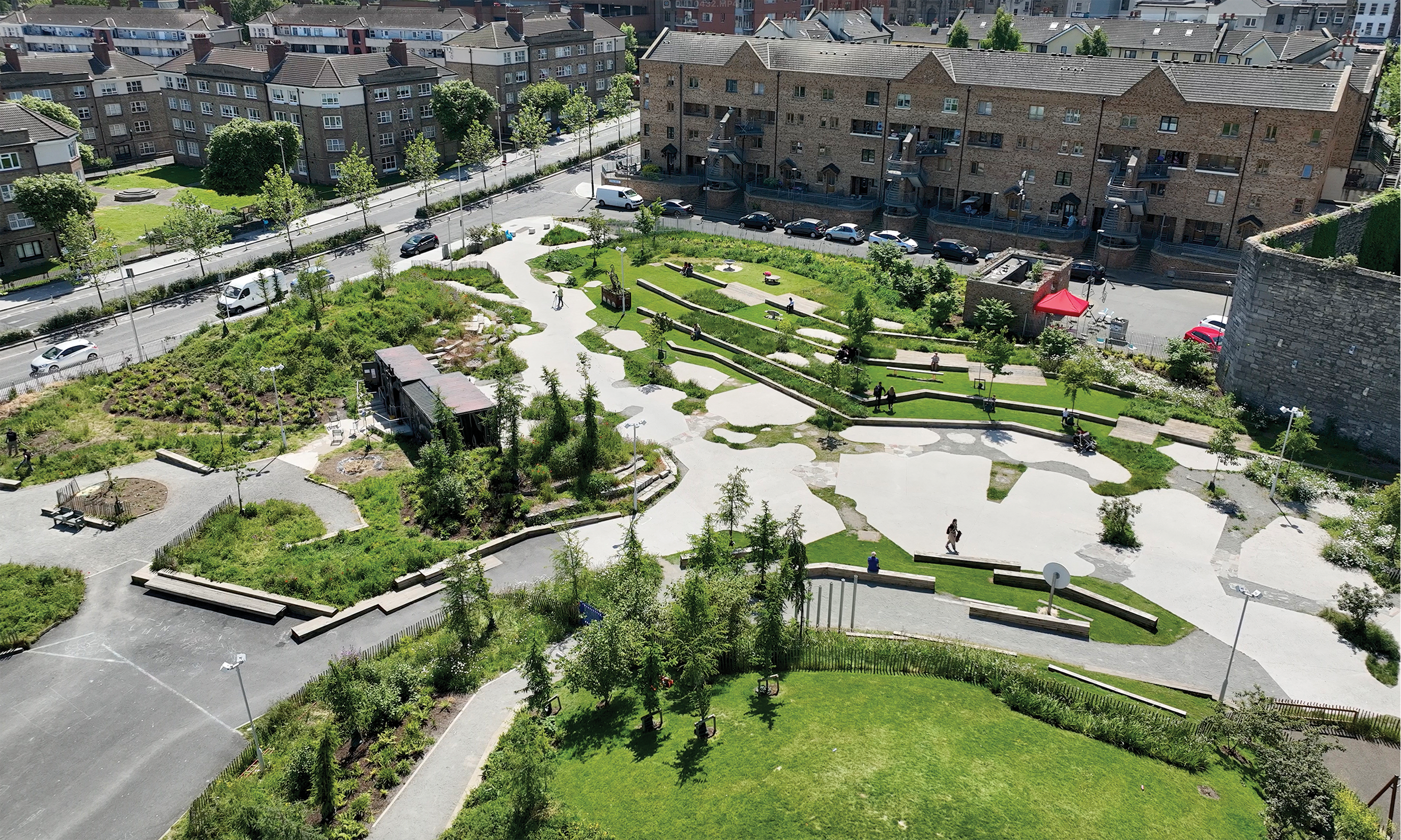
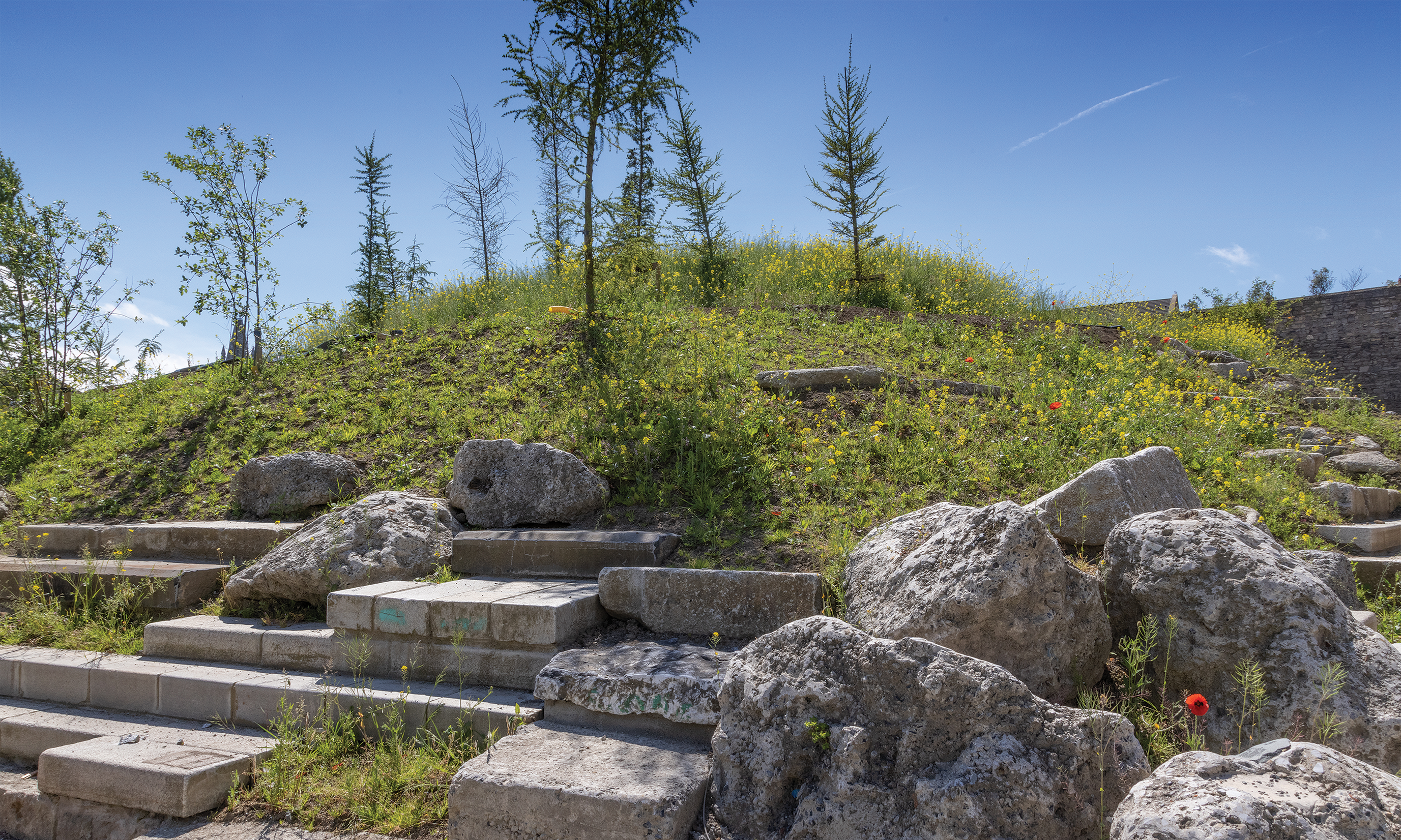
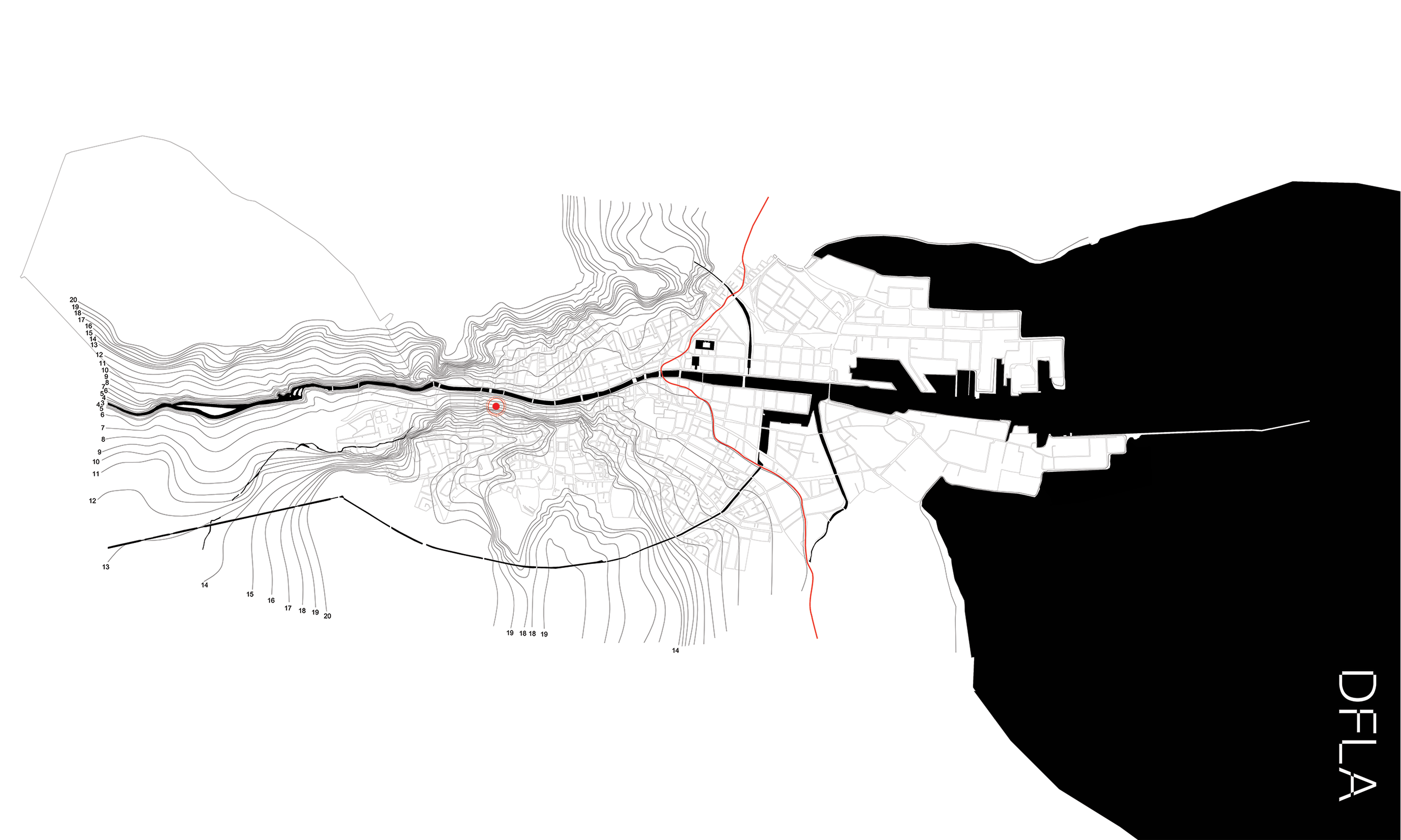
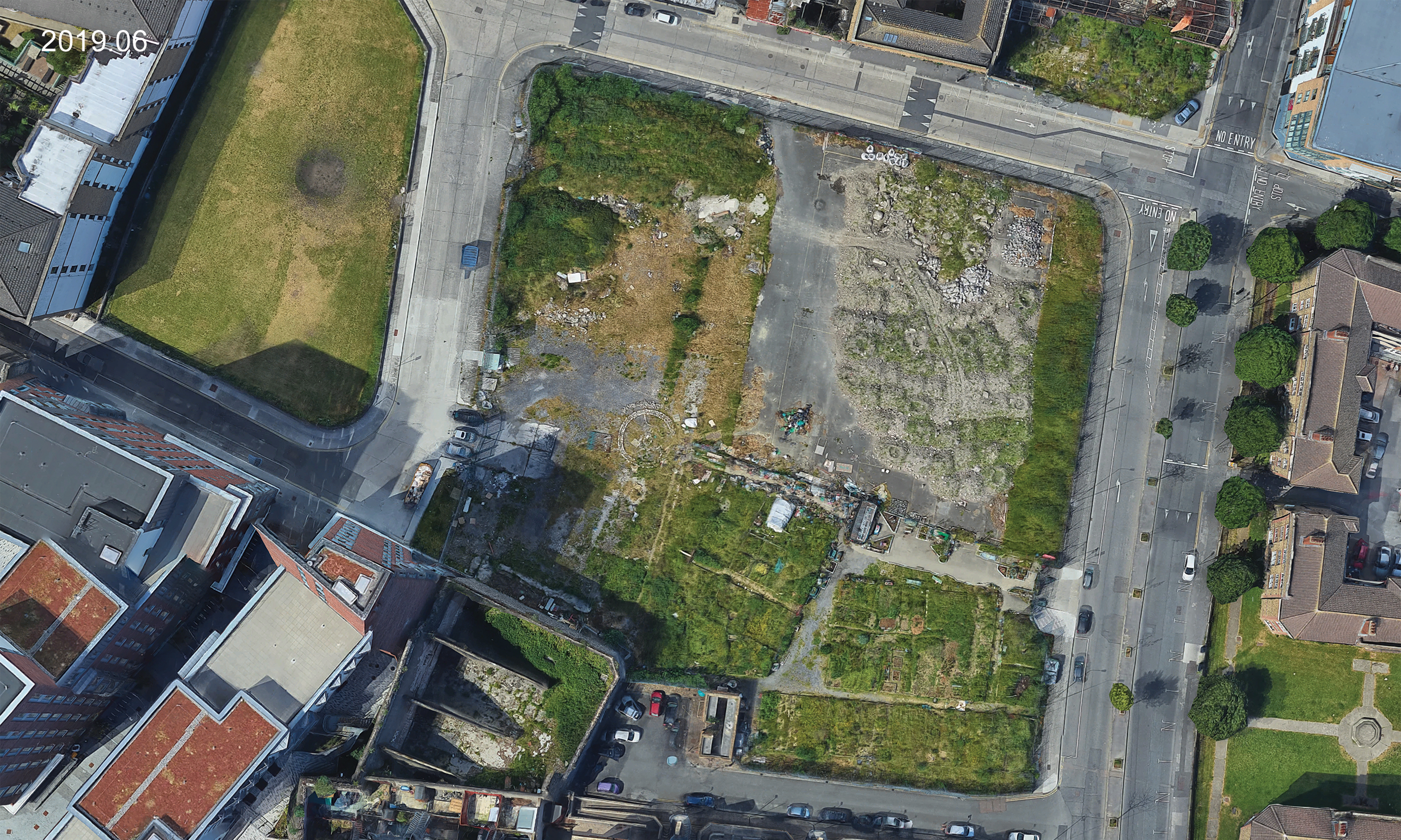
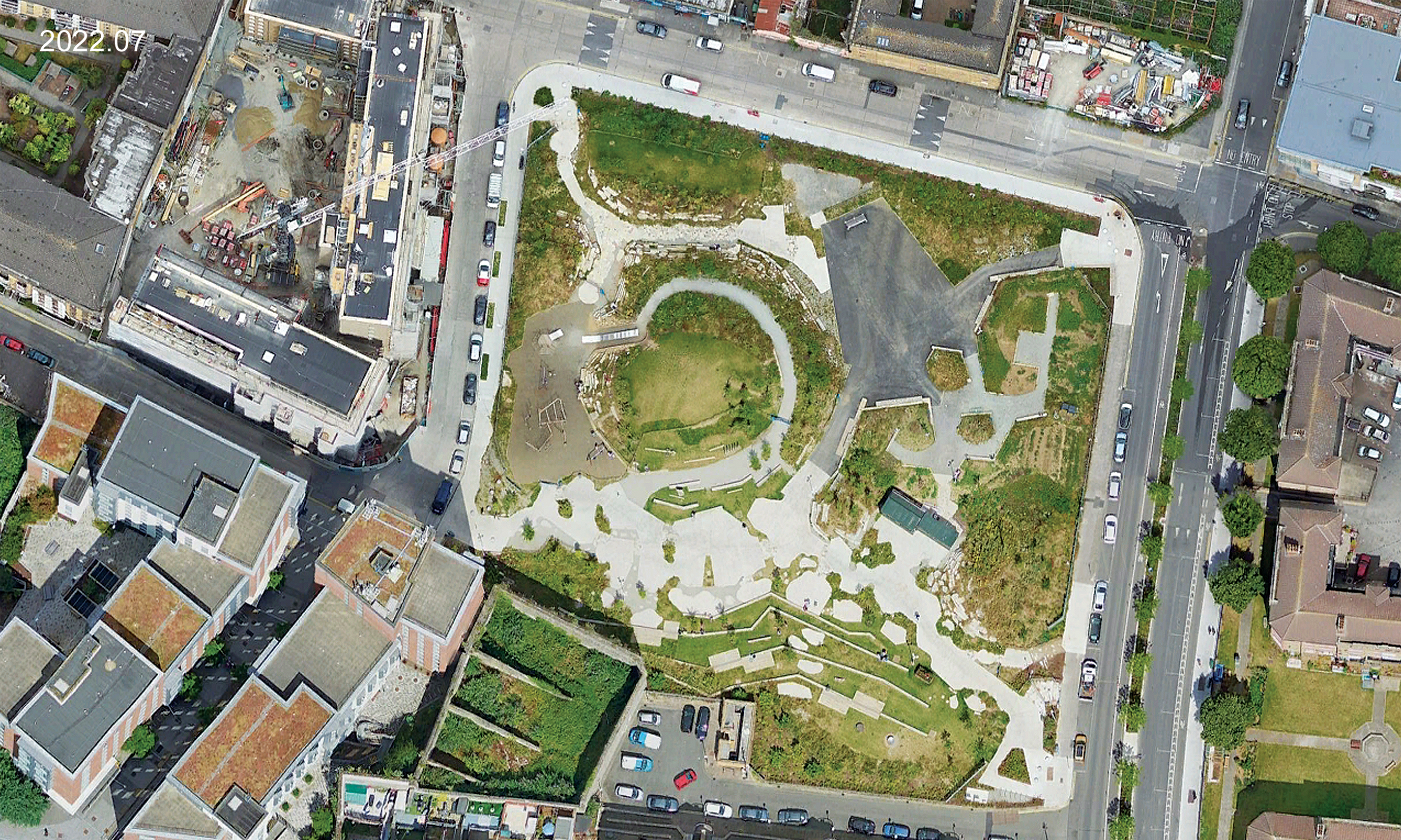

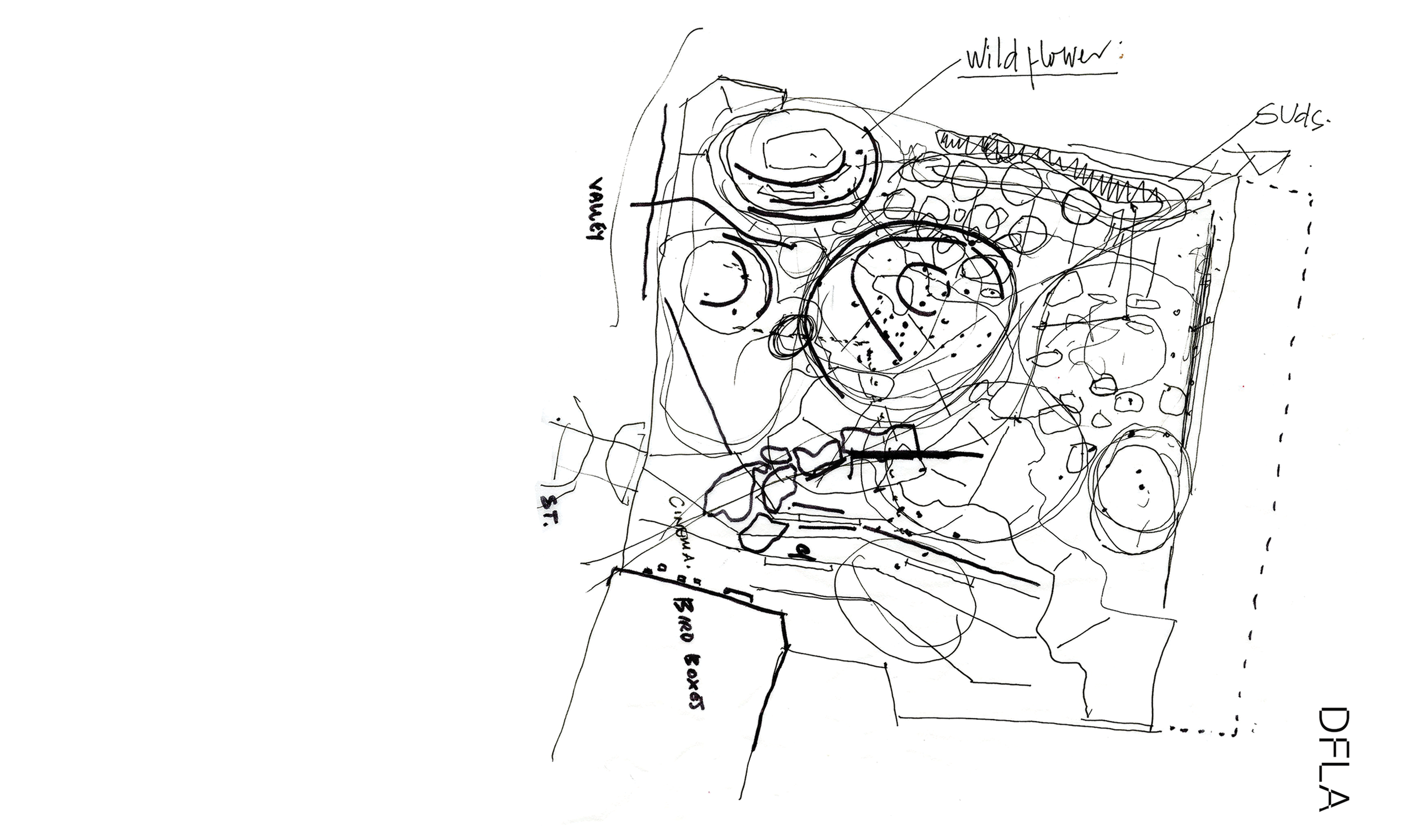
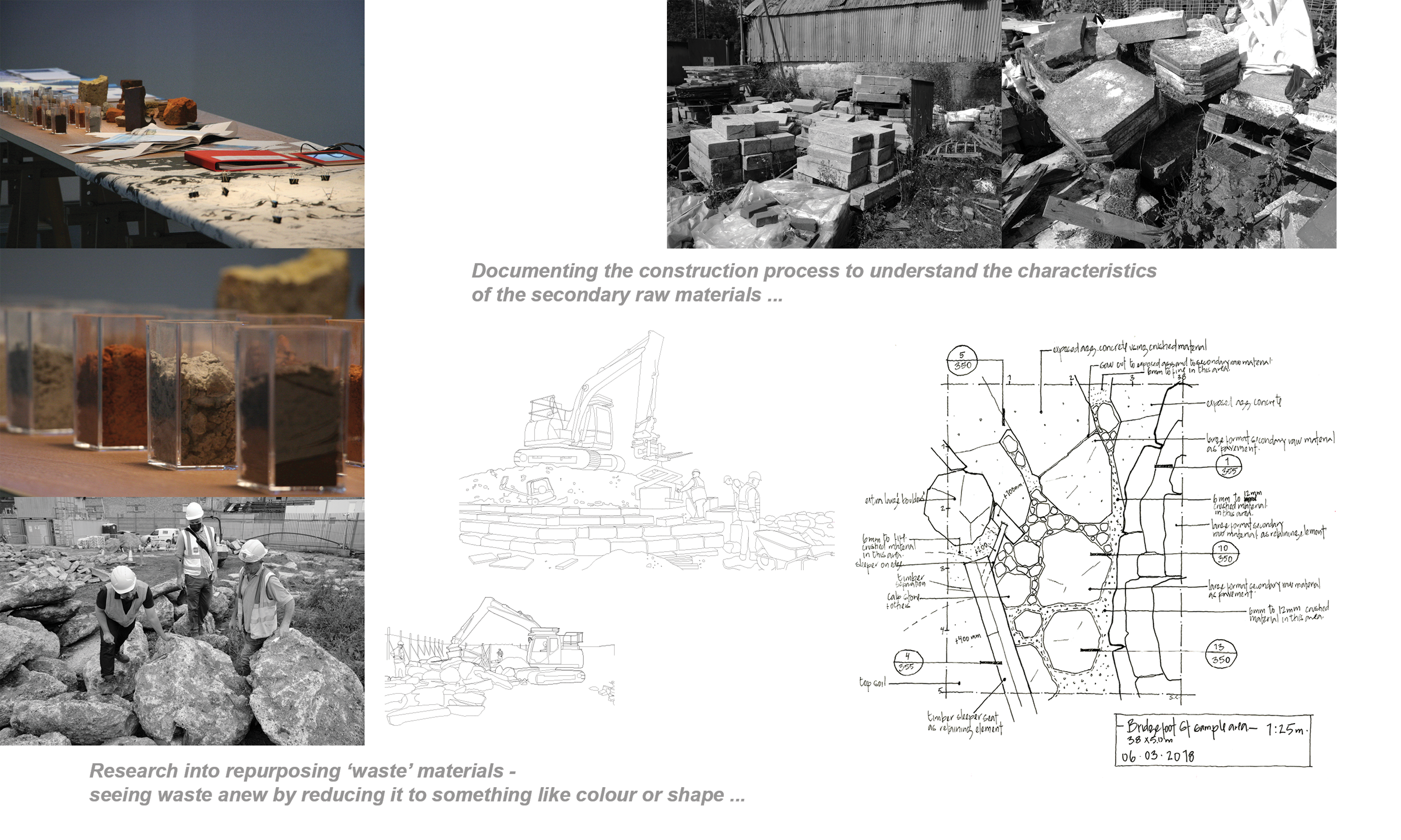
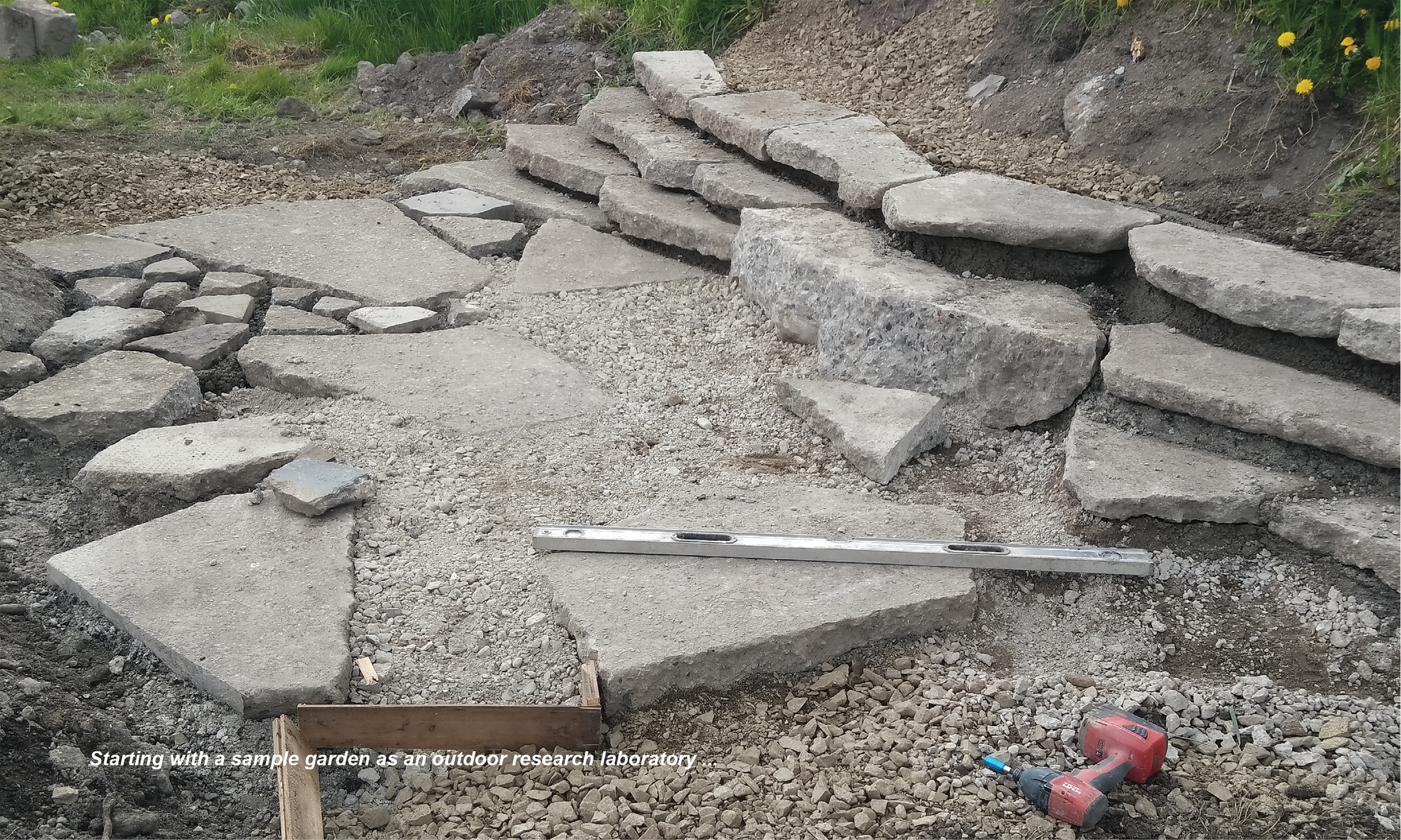
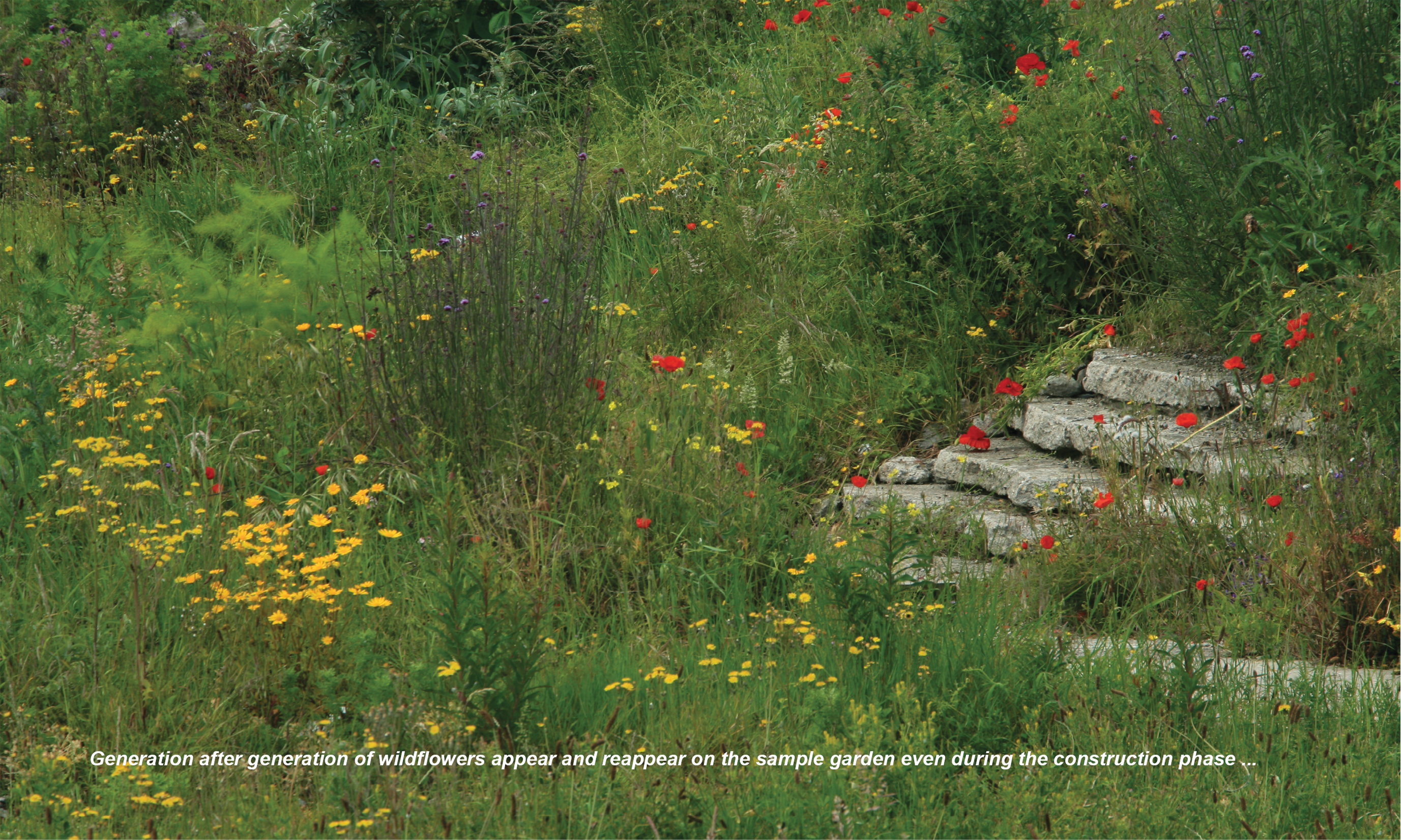

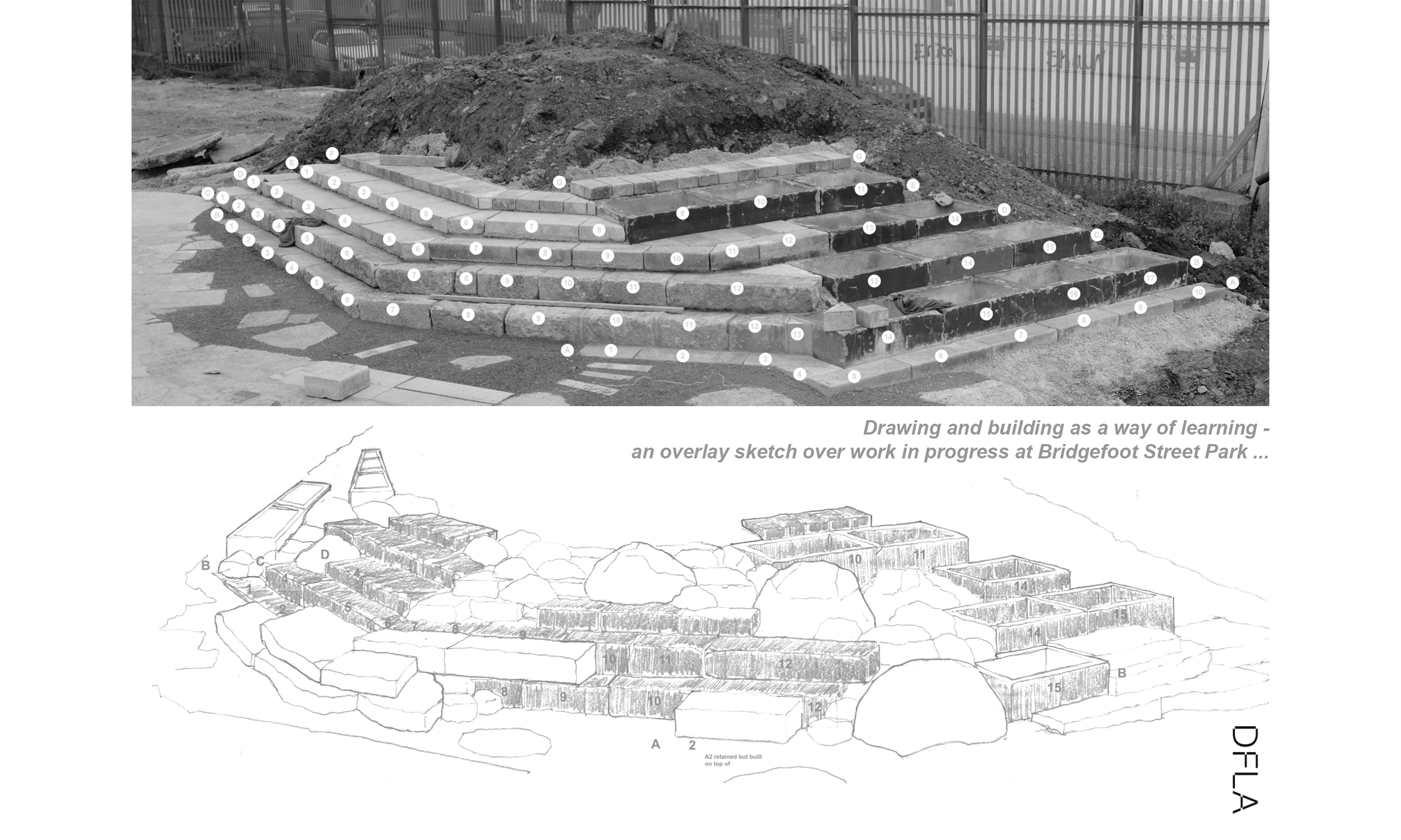
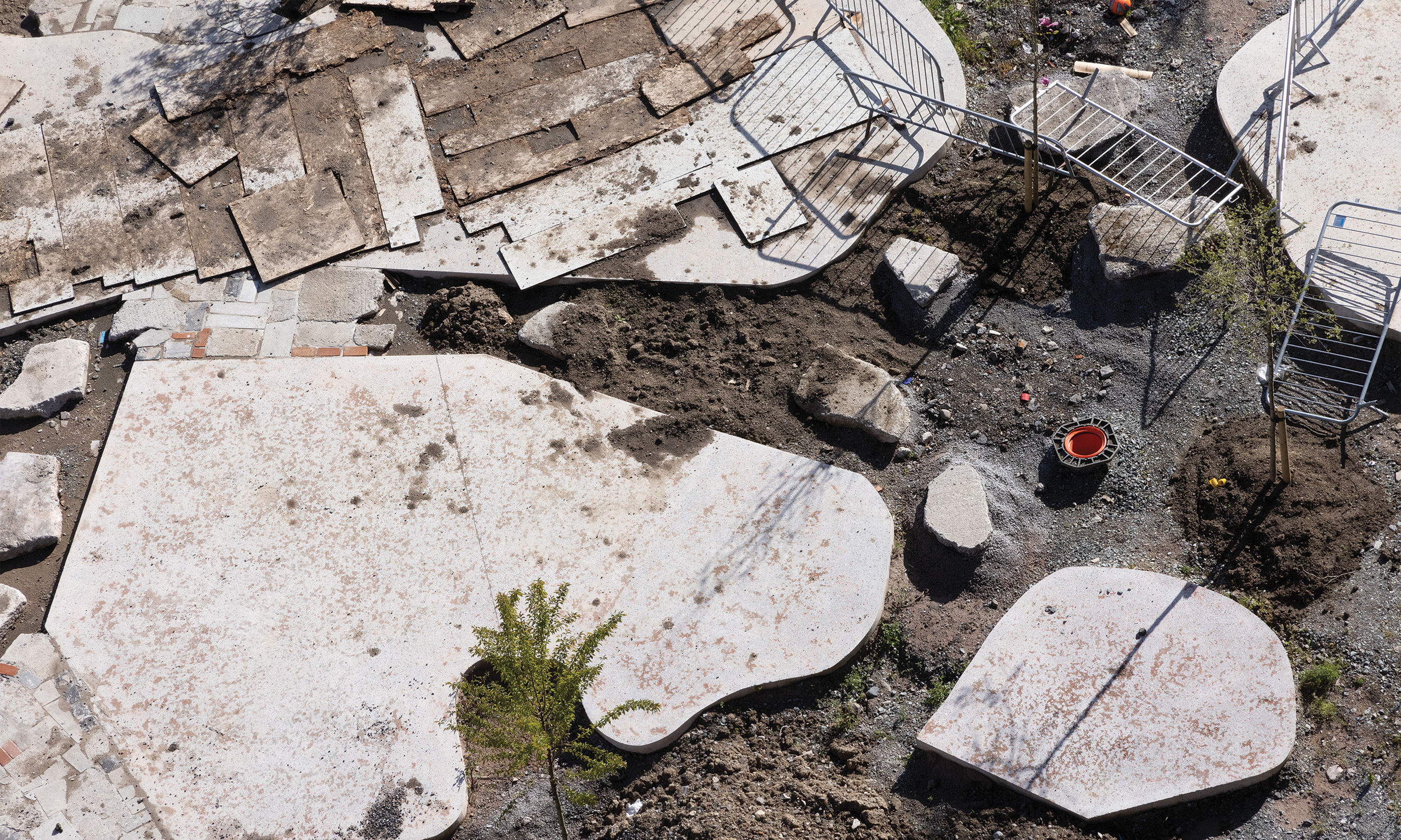
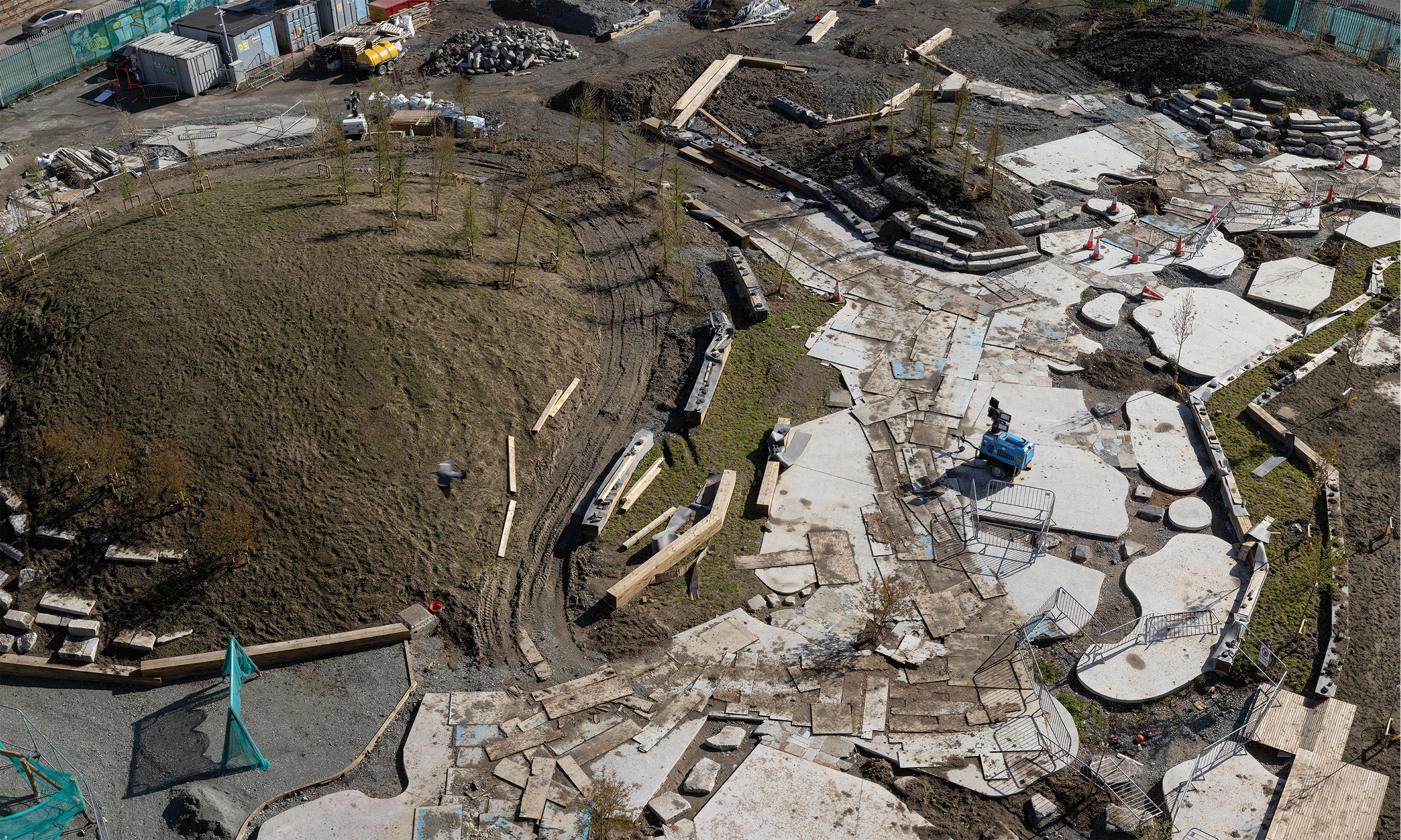
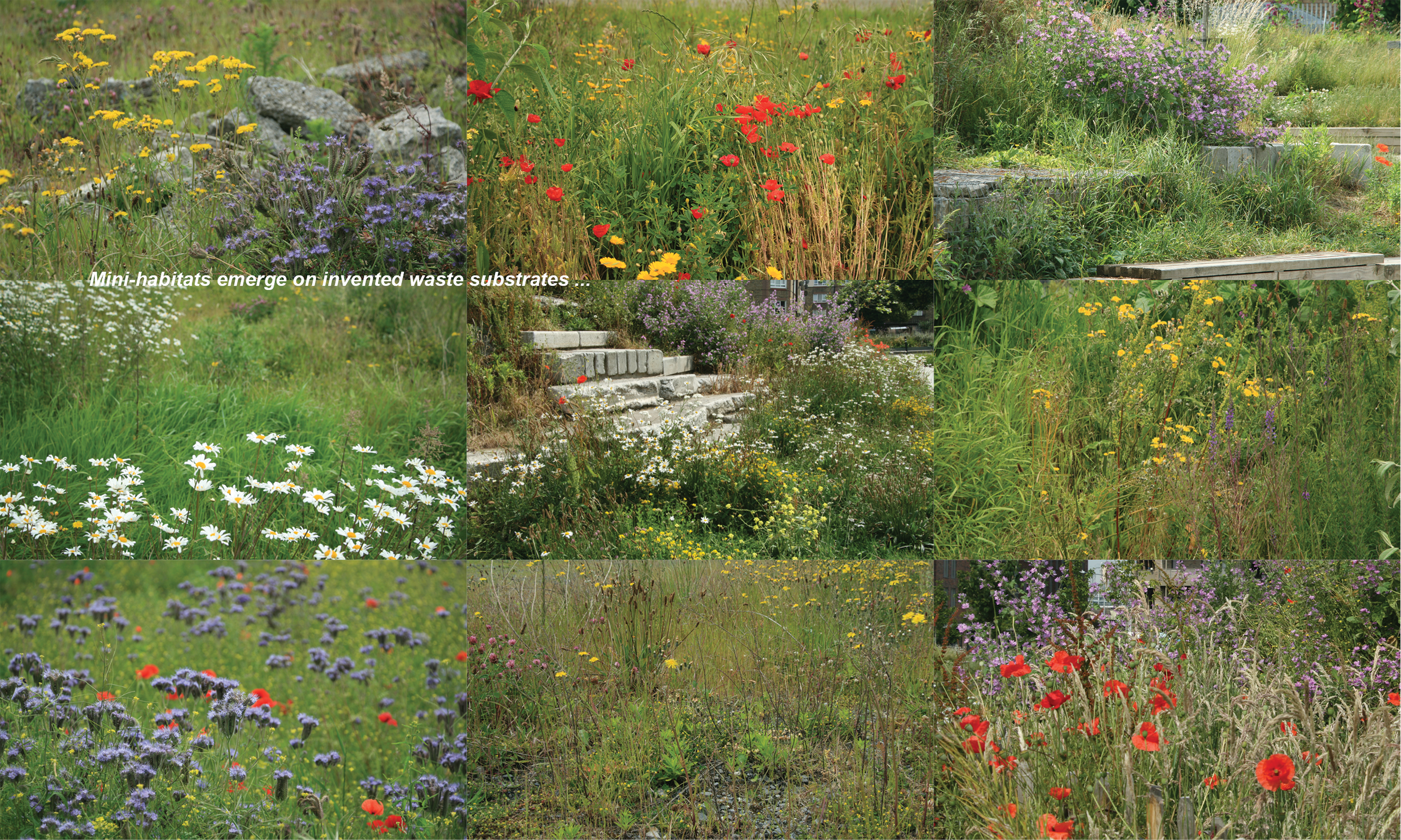
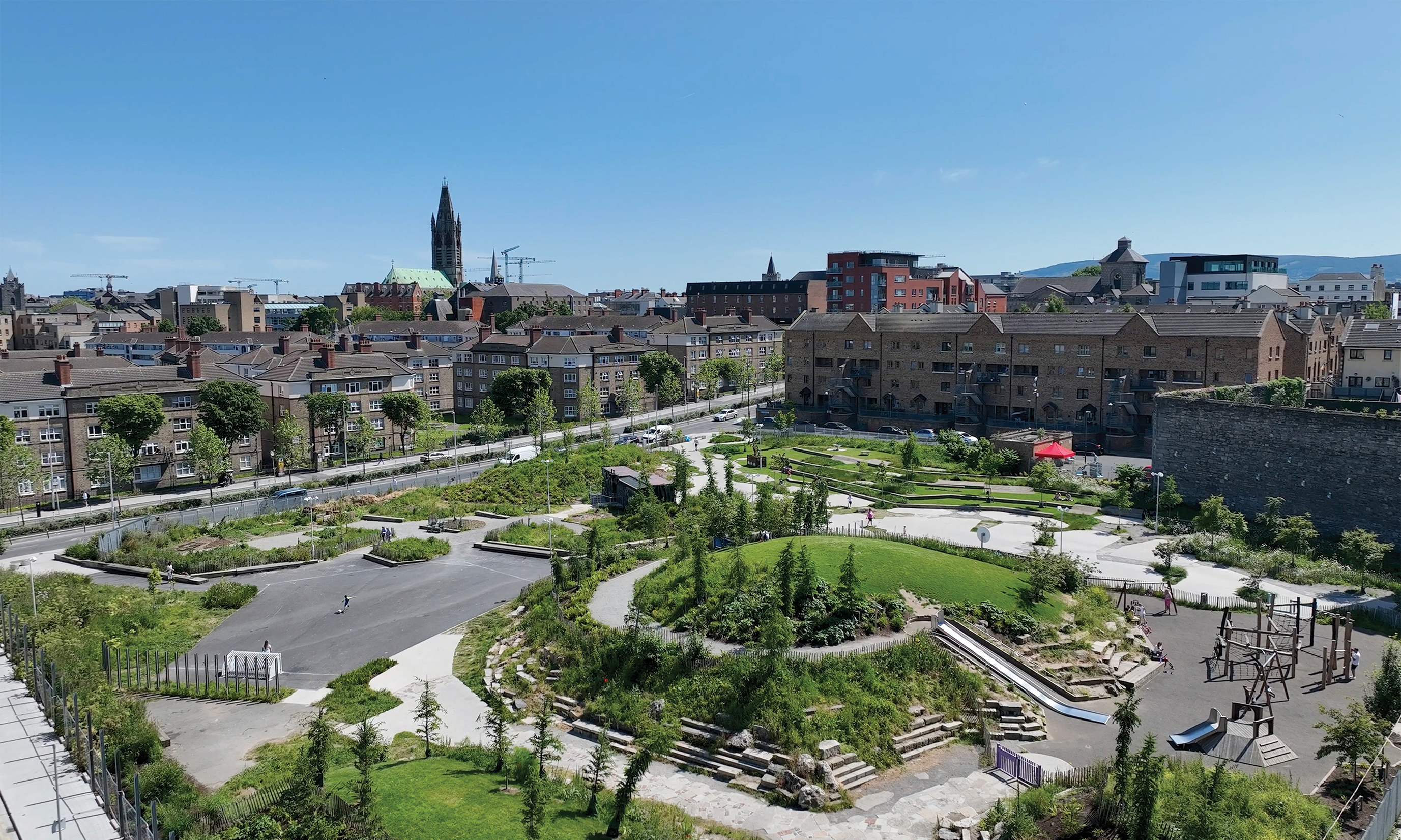
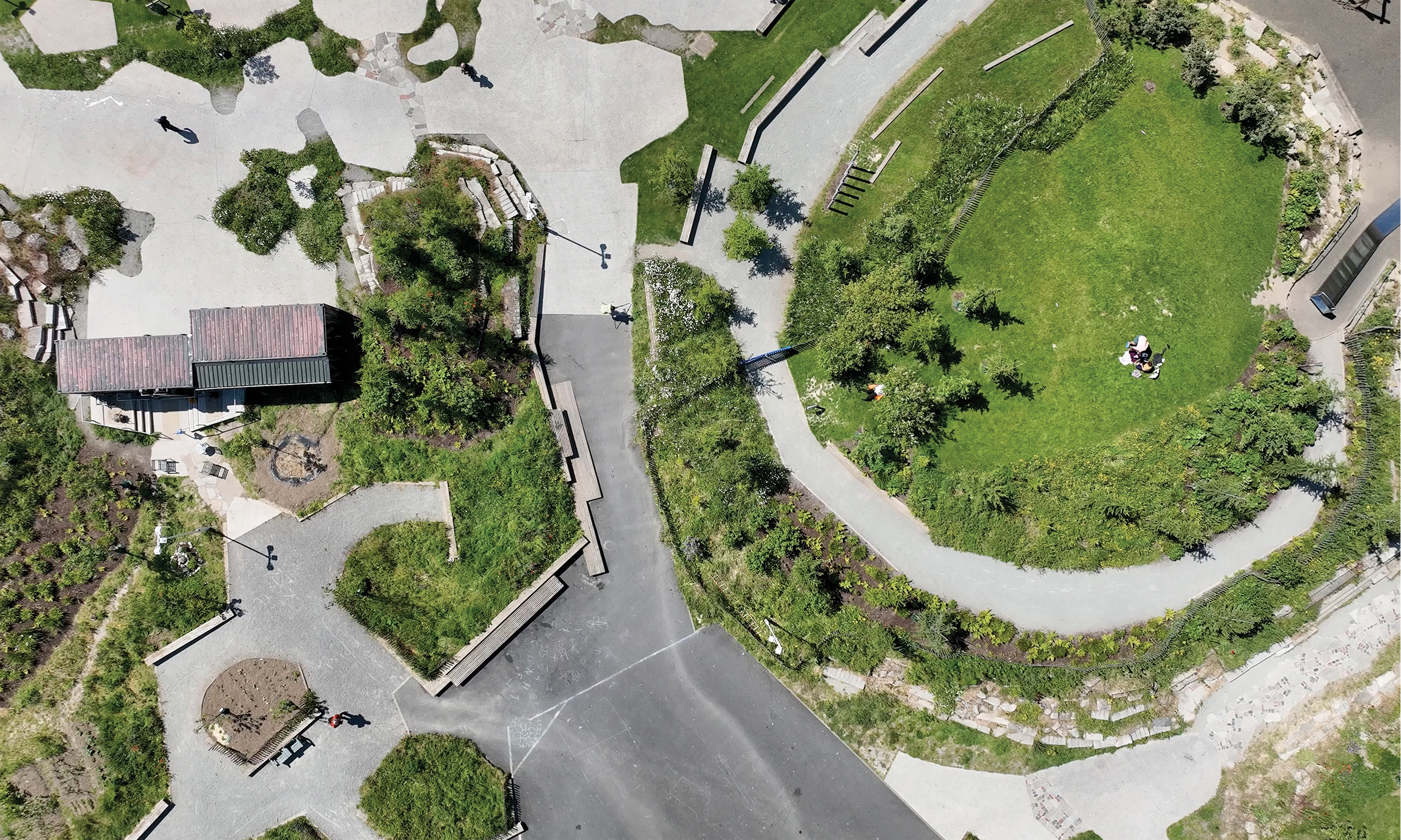
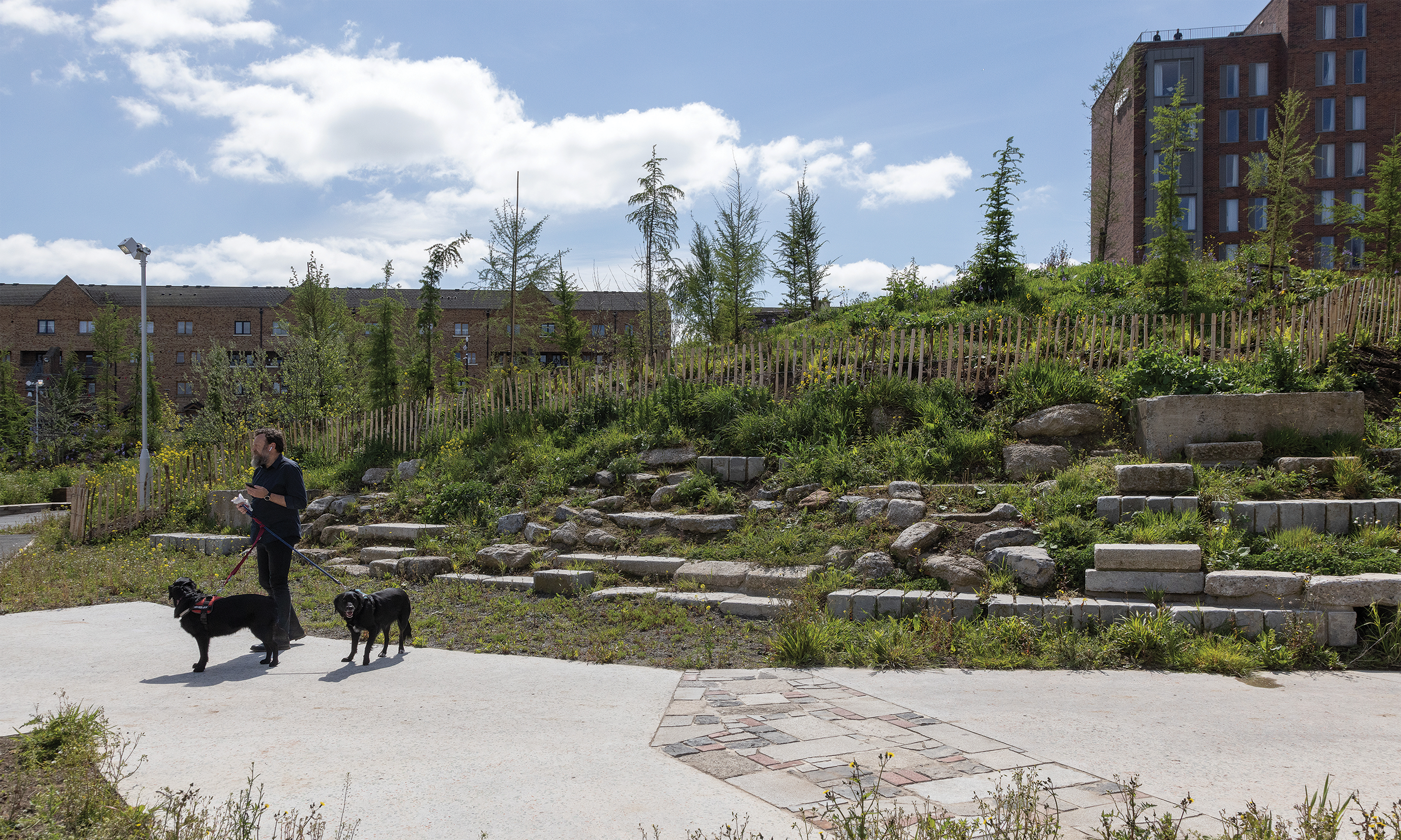

Bridgefoot Street Park by DFLA
Bridgefoot Street Park
Bridgefoot Street Park
Bridgefoot Street Park is a low-tech, low-cost artistic expression of the environmental sciences - a living artwork where waste materials become the medium of ecological and social imagination. Over 2,000m³ of construction waste, diverted from landfill, are transformed into new topography and much needed green open space at the heart of Dublin City. (SDG11: Sustainable Cities and Communities) The park is not simply made of waste, but maintained by low-level gardening interventions - grubbing, turning, disturbing the soil to awaken buried seedbanks and releasing waves of spontaneous germination. What might elsewhere be erased by herbicide here flourishes into full view, its unruly beauty challenging standard horticultural control. (SDG 15: Life on Land)
People dwell in this space not despite its wild eccentricity, but because of it. Its 'natural intelligence' emerges through the entanglement of ecological systems and cultural practices: collective actions of a community garden, public consultations demanding 'nature,' local researchers tracking ecological rhythms. Here, food plants entwine with wild ruderal species; bees colonize dry banks; children play on hills made of salvaged concrete as boulders; all underpinned by unseen ecological and social wisdoms (SDG 3: Good Health and Well-being).
Realizing this required inventive design methods. It involved physical and didactic trials: doctoral research into the artistic qualities of waste, a range of sketching and diagramming, the production of a non-pricing document and the construction of a trail garden, alongside technical specifications ensuring contractors grasped the ethos without distorting standard procurement processes. Ultimately, this led to designer, contractor and user consciously and unconsciously creating the conditions for species to reawaken from the seedbank (poppies), arrive by air (thistles), or slip in unnoticed (gazanias), Trojan-like, carried by soil and time. (SDG 13: Climate Action)
